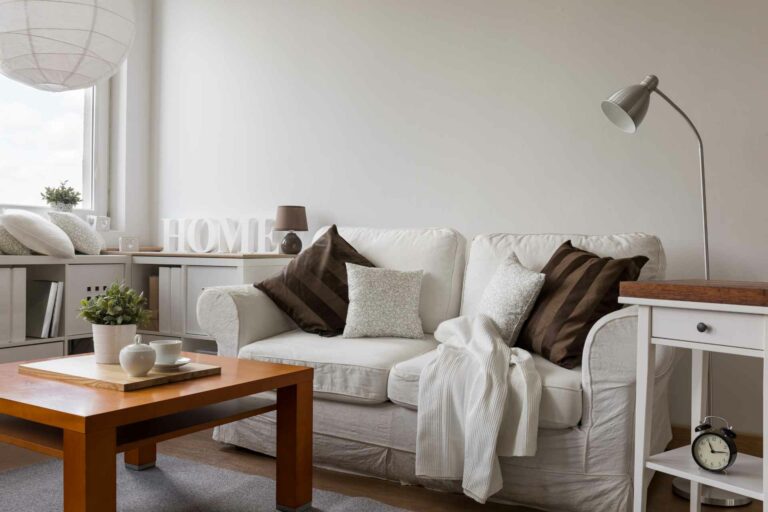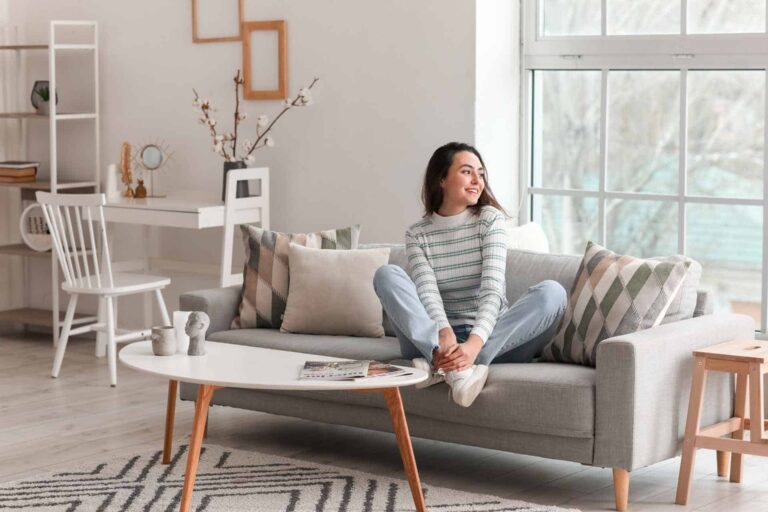Rectangular Living Room Layout Ideas: The Ultimate Guide to Furniture Arrangement
When it comes to designing your home, every room has its unique challenges, but rectangular living rooms can be particularly tricky to arrange. ‘Rectangular Living Room Layout Ideas’ are a focal point of this guide, providing valuable insights into making the most of elongated living spaces. These spaces often confuse homeowners due to their unconventional shape and the fact that they don’t offer an obvious starting point for placing furniture or decor. The right layout, however, can create an inviting, functional, and aesthetically pleasing space, irrespective of its shape. In this guide, we will explore various layout ideas for rectangular living rooms and the importance of selecting the right one to transform your living room into a comfortable and stylish area.
The Importance of Choosing the Right Layout
The choice of layout in a rectangular living room holds significant importance as it directly affects the functionality, comfort, and aesthetic appeal of the space. A well-planned layout can effectively address the challenges associated with the room’s shape, maximizing the use of available space while ensuring it doesn’t feel cramped or disjointed. It governs the flow of movement in the room, influencing how people interact within the space. The right layout also plays a crucial role in highlighting key features such as a fireplace or a window with a view, and can cleverly camouflage any architectural flaws. Therefore, investing time in choosing the right layout for your rectangular living room is a crucial step toward creating a harmonious and welcoming environment in your home.
rectangular living room layout ideas
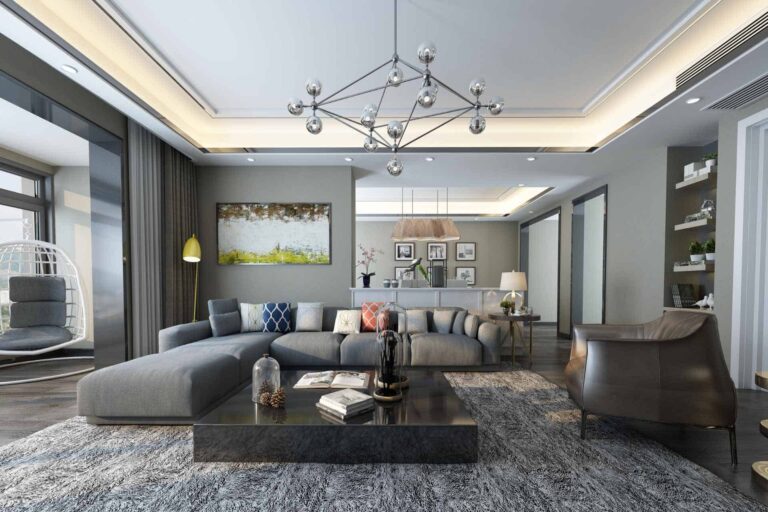
Before we delve into the various layout options for rectangular living rooms, let’s understand that each option has its unique charm and function. It’s crucial to choose a design that fits your lifestyle, personal taste, and the architectural parameters of your space. From minimalist layouts to more complex arrangements, the possibilities are endless. Read on as we navigate through a range of layout options that can help transform your rectangular living room into a cozy, functional, and visually appealing space.
The Classic Layout
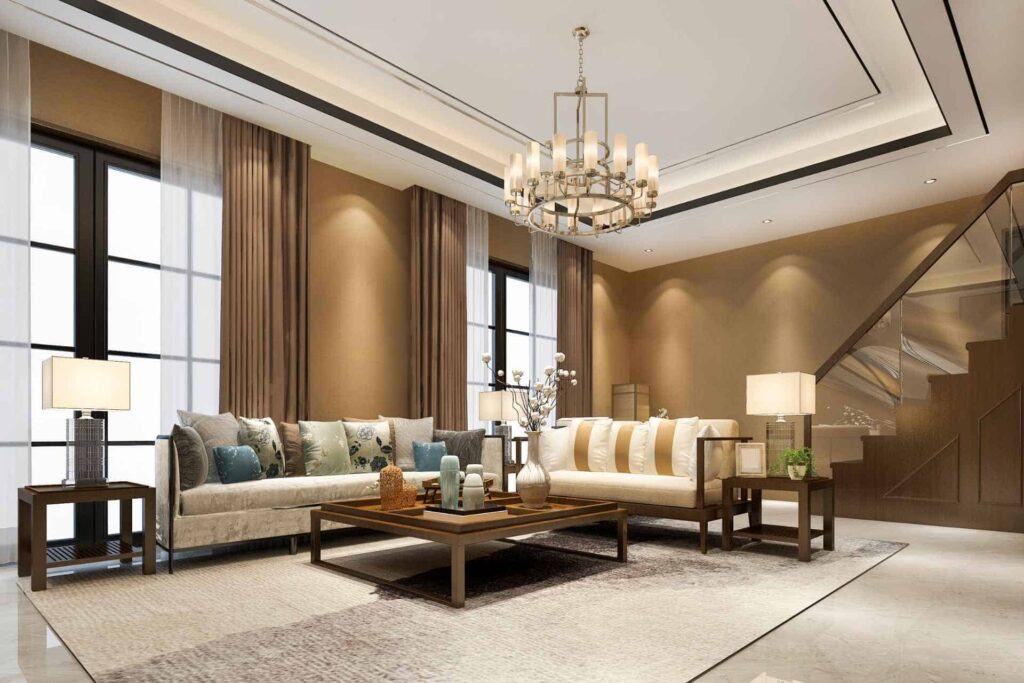
The Classic Layout, often referred to as the traditional or conventional layout, is a tried and tested choice for rectangular living rooms. It primarily involves placing the main seating piece against the longest wall and placing additional pieces of furniture at right angles or parallel to the main piece. This creates a ‘U’ or ‘H’ shaped arrangement which is both practical and aesthetically pleasing. A coffee table can be positioned in the center to anchor the space. This layout allows for easy conversation as it facilitates face-to-face interaction. It also cleverly uses the room’s shape to its advantage, creating a balanced and harmonious look. The classic layout is versatile and works well regardless of whether your living room serves as a formal reception area, a family gathering spot, or a casual lounging space.
The Symmetrical Layout
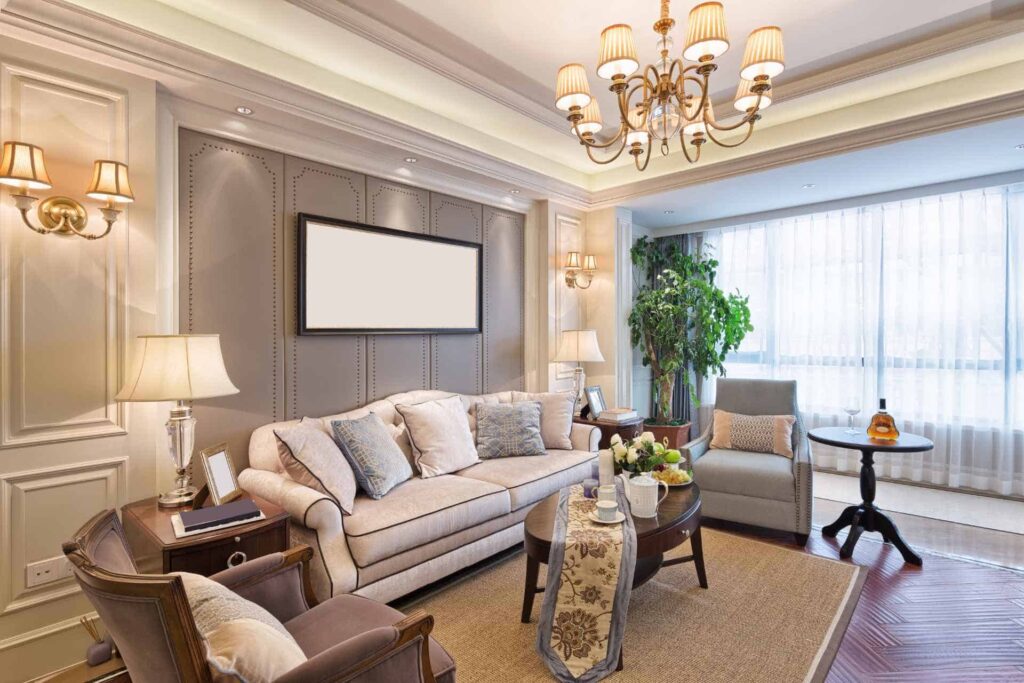
The Symmetrical Layout is another popular choice for rectangular living rooms. As the name suggests, this layout involves mirroring furniture on each side of an imaginary central line. This layout exudes a sense of formality and elegance, making it an excellent choice for formal living rooms or for those who prefer a more structured arrangement. The symmetry in this layout makes the room feel balanced and well-ordered, which can contribute to a calm and relaxed ambiance. This layout typically features a central focal point, like a fireplace, a large window, or a piece of artwork. Furniture pieces such as sofas, armchairs, and side tables are placed in pairs symmetrically relative to the focal point. A symmetrical layout can make a room look larger and more spacious, making it an ideal choice for both small and large rectangular living rooms.
The Conversational Layout
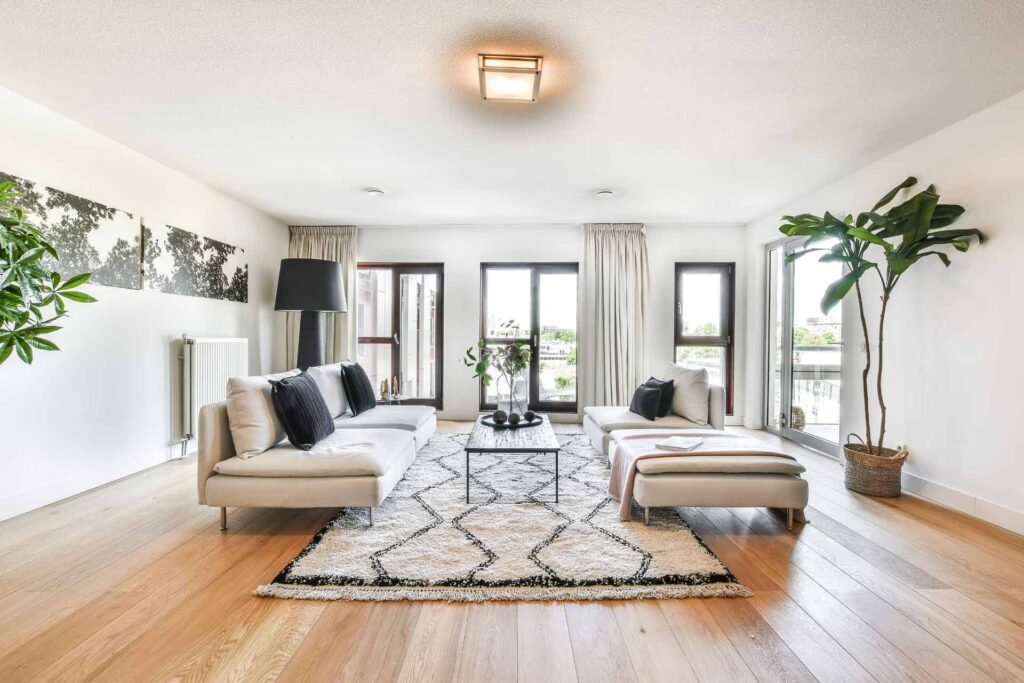
The Conversational Layout emphasizes comfort and ease of conversation in a living room. This setup typically involves placing the main seating pieces in a circular or semi-circular configuration, facilitating direct eye contact and conversation among everyone in the room. It’s possible to include sofas, armchairs, or even ottomans in this layout, as long as they contribute to the overall circle. The coffee table or an ottoman can be placed in the center of this layout to provide a shared space for placing drinks or decorative items. The Conversational Layout is particularly effective in rectangular living rooms where the fireplace or television is an offset from the center, as it shifts the focus from these features to the center of the room. This layout encourages interaction and a cozy, welcoming atmosphere, making it perfect for those who frequently entertain or enjoy family gatherings.
The Functional Layout
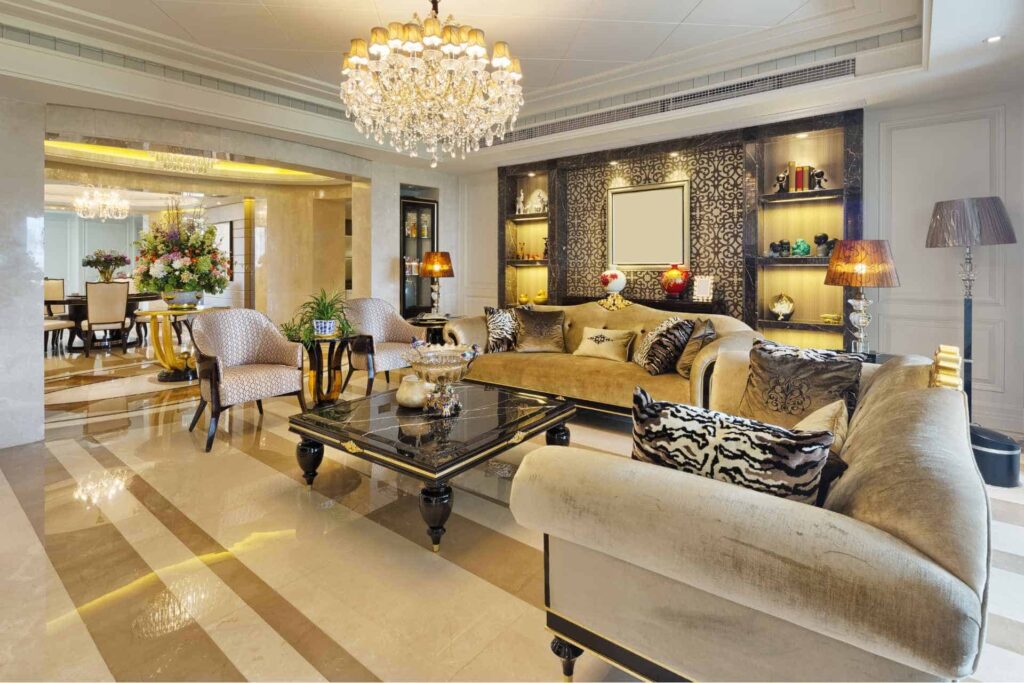
The Functional Layout prioritizes practicality and efficient use of space in a living room. This layout carefully considers the room’s primary purpose and arranges the furniture accordingly to facilitate ease of use. For instance, if the room is primarily used for watching television, the seating is arranged for an unobstructed view, possibly in a semi-circle or two parallel lines facing the television. In contrast, if the room is used mostly for reading or relaxing, a cozy reading nook might be the main feature, with comfortable chairs, a small table, and a lamp. Side tables are conveniently located for placing drinks, books, or decorative items, and there’s ample walking space to move around freely. A functional layout can adapt to any size or shape of the room, making the most of the available space, and can be tailored to accommodate any particular needs or preferences of the user. It’s a versatile layout that blends comfort and functionality, creating a living space that is not only visually appealing but also practical and user-friendly.
Tips for Arranging Your Furniture
When arranging your furniture, consider the following tips:
Measure Your Space
Before you start shifting furniture around, it’s crucial to measure your space. Accurate measurements will help you determine the scale of furniture that will fit comfortably in your living room without making it feel cramped or sparse. Use a tape measure to capture the width and length of the room, as well as the dimensions of any existing furniture you plan to use. Don’t forget to note down the dimensions of windows, doors, and any built-in features such as a fireplace or bookcases. A floor plan sketched out with these measurements will provide a visual guide to help you with placement and spacing, ensuring that your chosen layout will work in reality as well as it does in your imagination.
Define the Purpose of the Room
Identifying the primary purpose of your living room is a crucial step in furniture arrangement. What activities will be performed in this space? Will it be used for relaxation, entertainment, work, or a combination of these? If the room will be mainly used for family gatherings and watching television, the seating arrangement should be centered around the TV. On the other hand, if it’s designed as a quiet haven for reading or conversing, a cozy seating arrangement with a coffee table at its heart might be more appropriate. By clearly defining the room’s purpose, you can make informed decisions about the layout and the types of furniture that will best meet your needs. This ensures the room will remain functional and comfortable, and fit the lifestyle of its users, enhancing their day-to-day living experience.
Consider Traffic Flow
Traffic flow is a vital factor to consider when arranging furniture in your living room. It essentially means the ease with which people can move through the space. Your layout should allow for a natural and unobstructed path between entry and exit points, and to frequently used areas or items such as the television, sofas, or bookshelves. It is advisable to keep high-traffic areas clear of furniture to avoid accidents or damage. Also, avoid blocking windows or doors with furniture as it may hinder natural light and accessibility. By considering the traffic flow, you not only enhance the functionality of the room but also contribute to a more harmonious and inviting ambiance.
Balance Your Furniture

Achieving balance in your furniture arrangement can greatly enhance the overall aesthetic and feel of your living room. Balance refers to the visual weight distribution of furniture and decor in a room. For instance, if you have a large sofa on one side, consider anchoring the other side with a pair of armchairs and a side table. This doesn’t mean that everything has to match perfectly or be distributed symmetrically – rather, it’s about creating a sense of equilibrium that feels right to you. You can play with different sizes, shapes, and colors of furniture, as long as they come together to form a unified whole. Experiment with arrangements until you find a balance that feels harmonious and visually pleasing. Remember that well-balanced rooms feel more comfortable and welcoming, encouraging relaxation and sociability.
Use Rugs to Define Areas
Incorporating rugs into your living room design can be an effective way to demarcate specific areas and create a sense of coherence. You might use a large, statement rug to define the main seating area, drawing the furniture together in a way that feels grounded and centered. Rugs can also be used to separate different functions within the room; for example, a smaller rug might be placed under a reading chair and side table to create a distinct, cozy reading nook. When choosing rugs, consider not only their size and shape, but also their color and texture. These elements should complement your existing decor and contribute to the overall balance and harmony of the room. Remember, the goal is to create distinct, purposeful spaces within the larger room, while maintaining a cohesive and inviting atmosphere.
Don’t Forget About Lighting

Lighting can drastically alter the mood and aesthetic of your living room, and should not be overlooked in your design process. Layered lighting — combining ambient, task, and accent lighting — can create depth and interest within the space. Ambient lighting provides overall illumination, often achieved through ceiling fixtures or recessed lights. Task lighting is more focused, designed for specific activities such as reading; this could be a table lamp by your favorite armchair. Accent lighting is used to highlight architectural features or cherished objects within your room, such as spotlights for artwork or inbuilt shelf lighting. Additionally, consider the use of natural light; during the daytime, well-placed windows or skylights can imbue your space with a warm, inviting ambiance. Reflect on how you intend to use the space at different times of day and plan your lighting accordingly. Proper lighting can enhance the balance and harmony of a room, spotlight your favorite elements, and contribute to an overall sense of comfort and warmth.
Choosing a Color Scheme
The color scheme of your living room can notably influence its atmosphere and energy. When selecting a palette, consider shades that not only align with your personal aesthetic but also contribute to the mood you want to evoke. Neutral tones, like beiges and greys, can evoke a sense of calm and sophistication, while vibrant hues like yellows or blues can make the space feel lively and cheerful. Remember, the color you choose doesn’t just stop at your walls. It extends to your furniture, decor pieces, and even lighting. Consistency is key; make sure the colors complement each other, creating a cohesive and harmonious visual effect. Experiment with different shades, patterns, and textures to add depth and interest. Lastly, always consider the amount of natural light your room gets, as it can significantly impact how colors appear throughout the day. By thoughtfully selecting a color scheme, you can create a living room that is both visually pleasing and emotionally inspiring.
Accessorizing Your Living Room

Accessorizing isn’t just about adding finishing touches, it’s about creating character, infusing your personality, and enhancing the ambiance of your living room. Start with larger items like rugs and curtains – these not only establish initial visual interest but also contribute to the overall comfort of the room. Cushions and throws are an excellent way to introduce texture and depth, while mirrors can add a sense of spaciousness to smaller rooms. Wall-art, whether it be paintings or framed photographs, adds a personal touch and can act as a focal point. Smaller trinkets, like vases, decorative bowls, or coffee table books, offer an opportunity to showcase your personal style and interests. Remember, it’s all about balance – while a room without accessories can seem austere and cold, too many can make it feel cluttered and overwhelming. Strive for a balance that feels right to you, and don’t be afraid to rearrange, replace, or eliminate items as your tastes evolve.
Following these tips will help you create a functional and visually appealing layout that suits your lifestyle.
Conclusion
In conclusion, effective layout and design of a rectangular living room can transform it into a warm and welcoming space that reflects your personality and style. From selecting a harmonious color scheme to balancing the perfect amount of accessories, each element plays a vital role in shaping the overall ambiance. Larger items like rugs and curtains set the initial tone, while smaller decor pieces allow for personalization and character. Smart use of mirrors can create an illusion of space, particularly vital in smaller rooms. Remember that simplicity and balance are crucial to avoiding clutter and maintaining a sense of calm and comfort. Ultimately, creating a well-designed rectangular living room is a dynamic process that evolves with your changing tastes, needs, and lifestyle. Embrace the journey, and you’ll find the process just as rewarding as the outcome.





